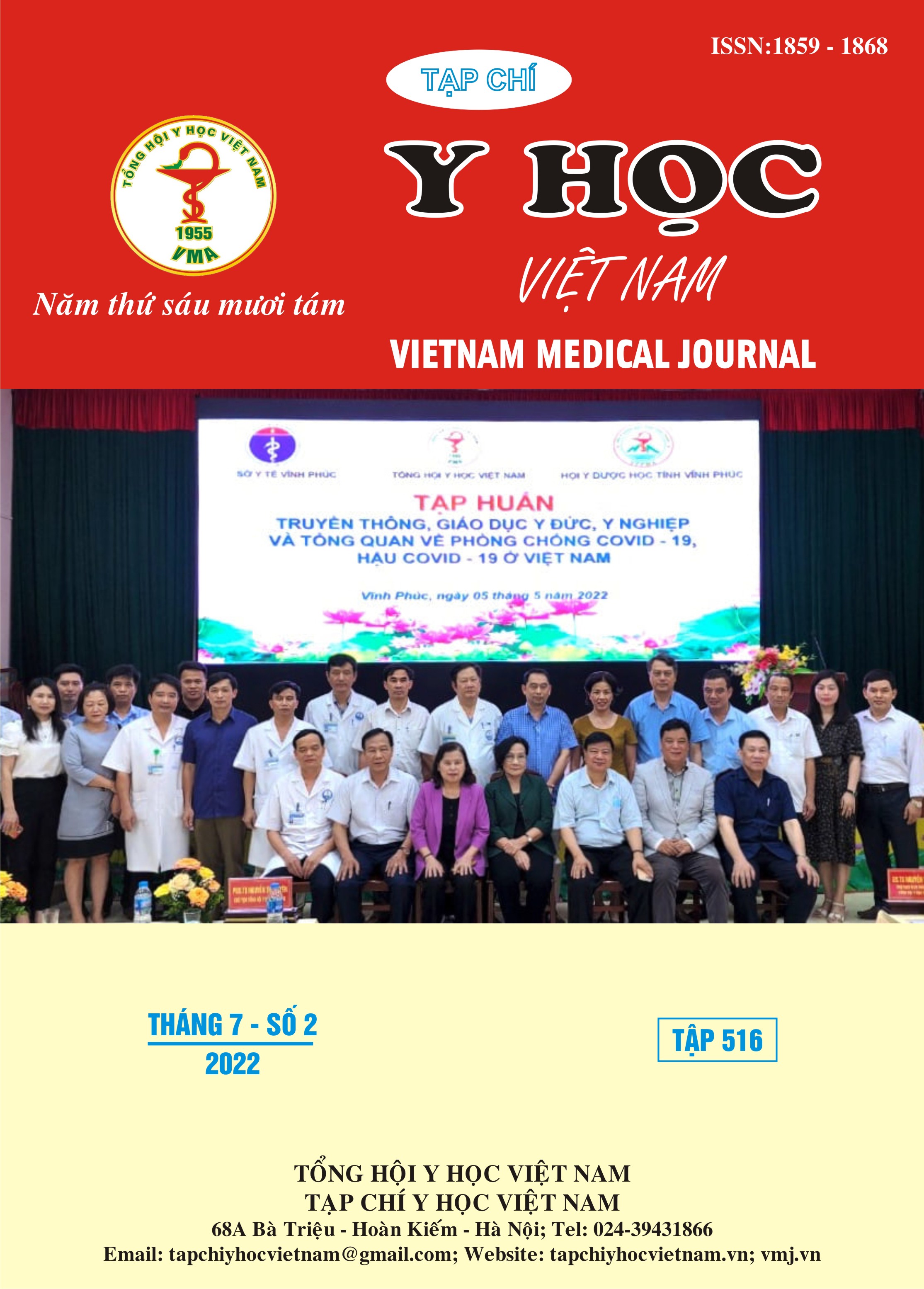ASESSMENT OF THE CURRENT SITUATION OF SINUSITIS OF MILITARY ZONE 3 IN THE ISLAND DISTRICTS, QUANGNINH PROVINCE
Main Article Content
Abstract
Objectives: To evaluate the current status of rhinosinusitis in officers and soldiers stationed in the sea and islands of Military Region 3. Subjects and methods: A cross-sectional and descriptive description of the current status of the staff's rhinosinusitis disease. soldiers and soldiers stationed in the two island districts of Co To and Van Don in Quang Ninh province for over 6 months. Results: 551 servicemen participated, 100% were male, age 23.6±7.5 (18-51), working time on the island more than 1 year accounted for 60.25%; 92.38% are Kinh and 6.9% are Muong. The prevalence of rhinosinusitis is 47.2%, of which chronic rhinosinusitis is 9.98%. Symptoms of stuffy nose and runny nose appeared at the rate of 49.62% and 39.62%. There were 10.77% of patients with poor smell, cough (31.92%), and hoarseness (19.23%). These symptoms lasted for 12 weeks or more, accounting for 6.9%, 12%, and 15.66%. Endoscopic symptoms showed pale mucosa, degeneration of the middle and lower rolls (49.92%, 28.85%, and 30%). There is a 1.15% detection of the middle slit polyp. Conclusion: The rate of general rhinosinusitis and chronic rhinosinusitis among military personnel stationed in the sea and islands is high. It is necessary to educate about preventive measures and periodically check for sinus disease and promptly treat cases to avoid progression to chronic disease, ensure the health of the troops, and the combat readiness of the unit.
Article Details
Keywords
Soldiers, island, acute rhinosinusitis, chronic rhinosinusitis
References
2. Hirsch AG, Stewart WF, Sundaresan AS, et al. (2017). Nasal and sinus symptoms and chronic rhinosinusitis in a population‐based sample. 72(2): 274-281.
3. Wen-Xiang Gao, Chun-Quan Ou, Shu-Bin Fang, et al. (2016). Occupational and environmental risk factors for chronic rhinosinusitis in China: a multicentre cross-sectional study. Respiratory Research; 17(54).
4. Phùng Minh Lương. (2010) Nghiên cứu mô hình và yếu tố ảnh hưởng đến bệnh Tai Mũi Họng thông thường của dân tộc Ê Đê Tây Nguyên, đánh giá kết quả của một số biện pháp can thiệp phù hợp ở tuyến thôn bản. Luận Án Tiến sỹ Y học: Trường Đại học Y Hà Nội.
5. Fokkens WJ, Lund VJ, Mullol J, et al. (2012). EPOS 2012: European position paper on rhinosinusitis and nasal polyps 2012. A summary for otorhinolaryngologists. 50(1): 1-12.
6. Nguyễn Như Đua (2021), Nghiên cứu thực trạng bệnh viêm mũi xoang mạn tính ở công nhân ngành than – công ty Nam Mẫu Uông Bí Quảng Ninh và đánh giá hiệu quả của biện pháp can thiệp. Luân án Tiến sĩ – Đại Học Y Hà Nội
7. Lê Văn Thắng (2018). Nghiên cứu đặc điểm lâm sàng và cận lâm sàng của viêm mũi xoang mạn tính có kèm bệnh lí đường hô hấp. Luân văn cao học - Đại học Y Hà Nội
8. Lê Văn Dương (2017). Thực trạng bệnh lý mũi xoang của công nhân mỏ công ty than Quang Hanh và một số yếu tố liên quan. Luận văn Chuyên khoa cấp 2 – Đại học Y Hà Nội.


